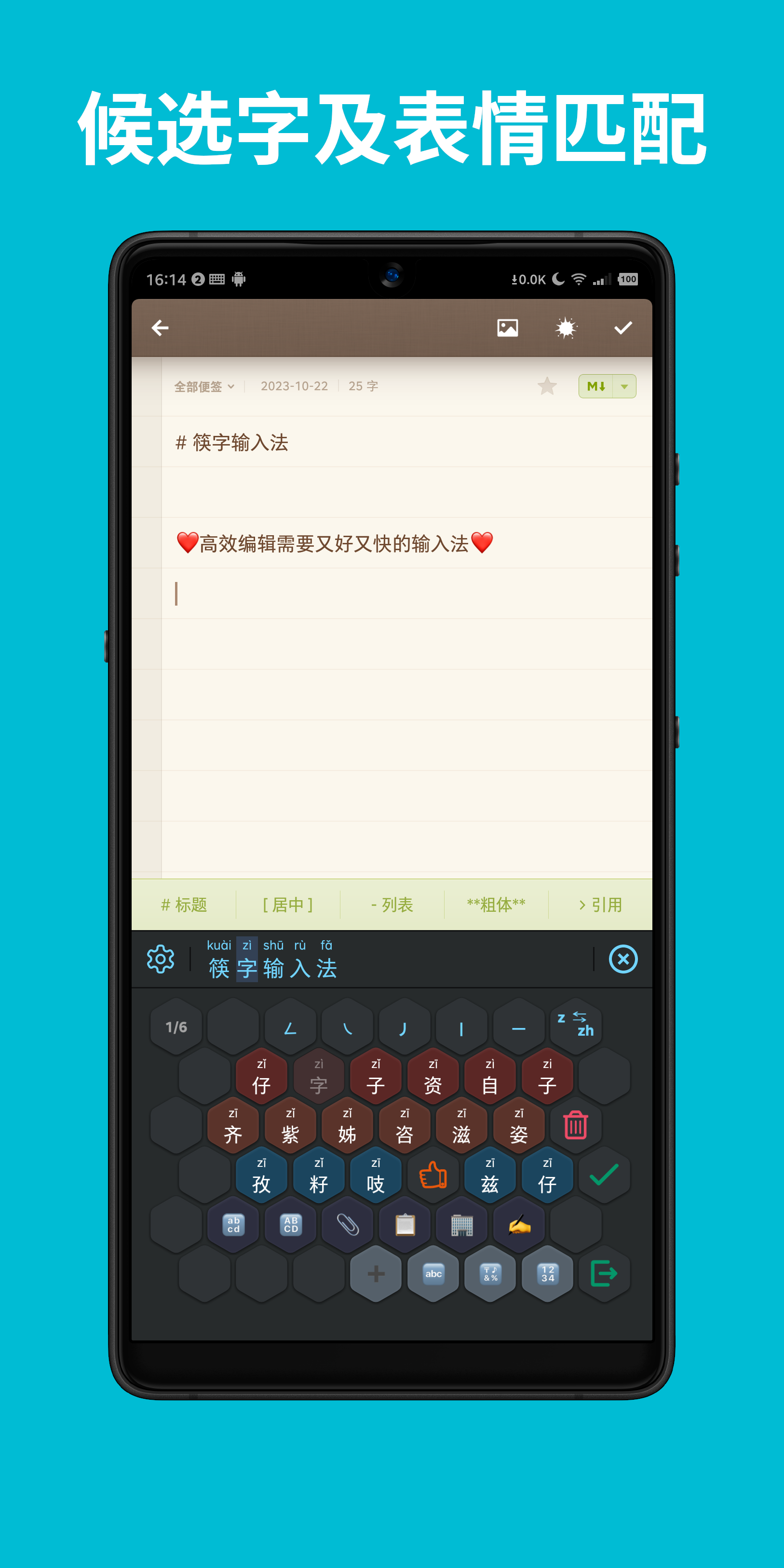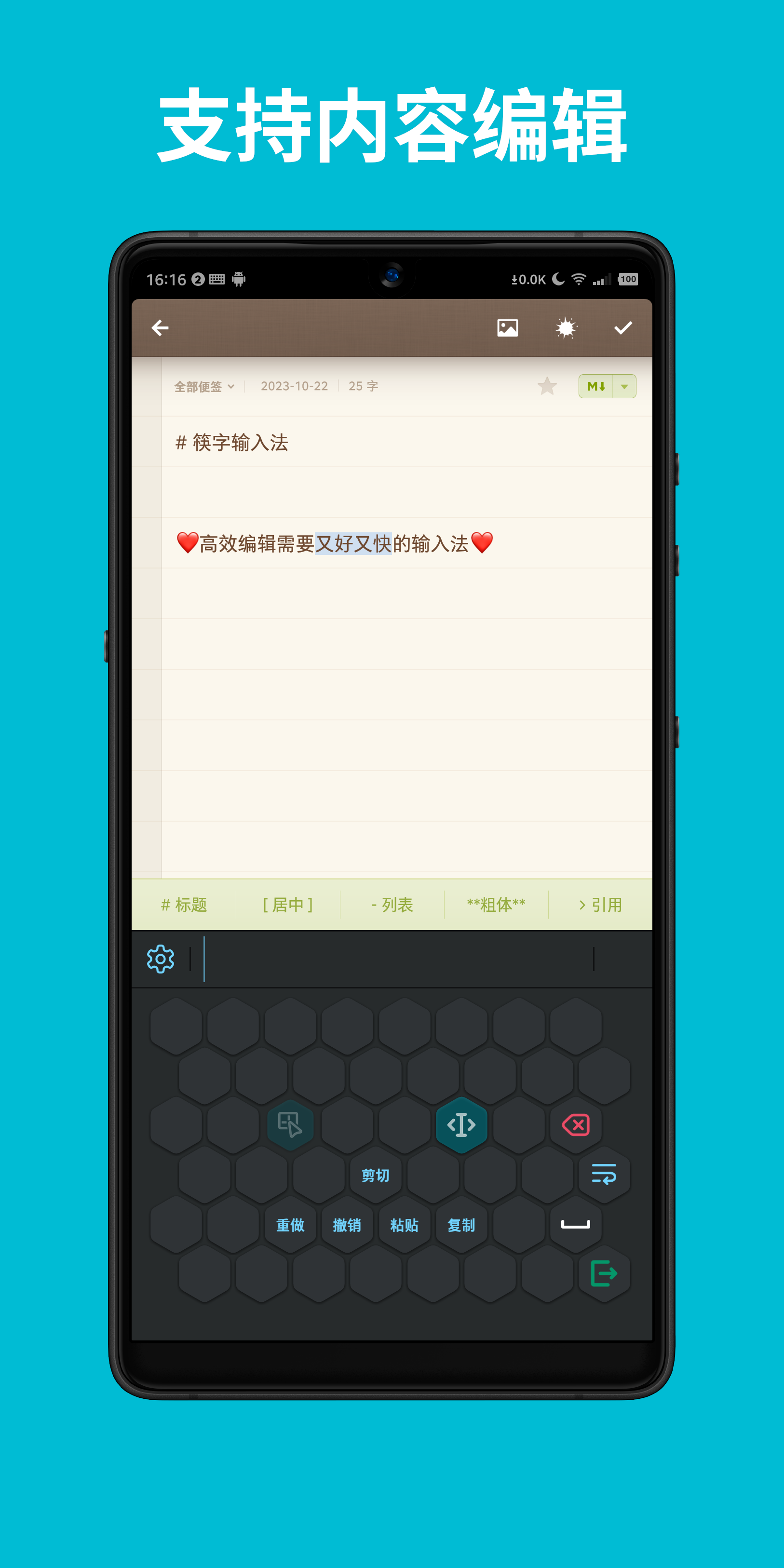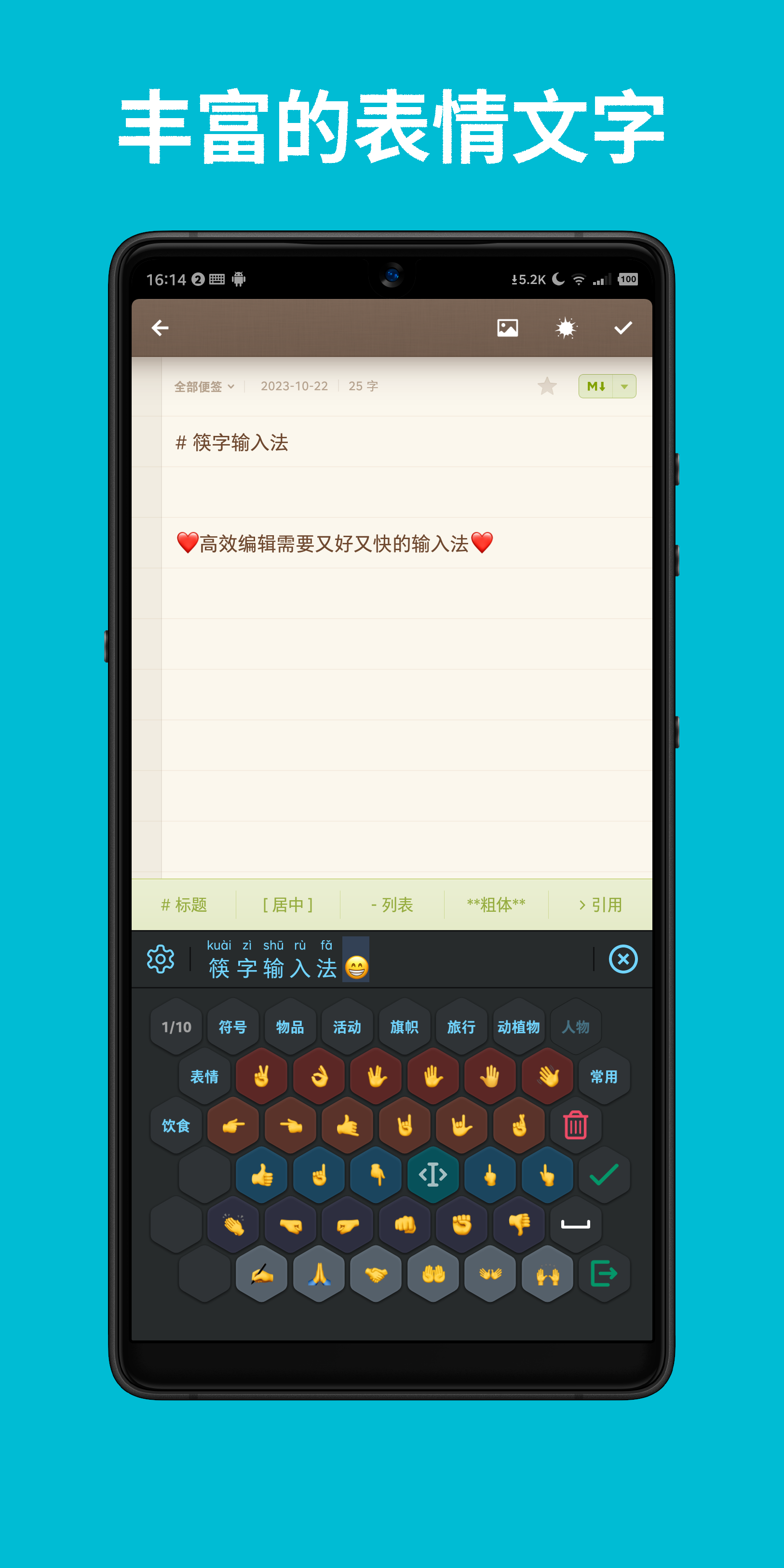Kuaizi IME
Kuaizi IME is an efficient and fast Chinese Pinyin input method editor.
Version: 3.1.1
Added: 20-01-2025
Updated: 07-06-2025
Added: 20-01-2025
Updated: 07-06-2025
筷字输入法 (Kuaizi IME) is a system based on the combinatorial features of Chinese Pinyin. It is an efficient and fast input method editor, suitable for electronic touchscreen devices.
筷字输入法 (Kuaizi IME) abandones the traditional method of tapping on virtual keyboard keys one by one, it instead offers a swipe input method for Pinyin, combined with the combinatorial features of Pinyin letters. The key layout is designed to make Pinyin input more accurate and convenient.
筷字输入法 (Kuaizi IME) provides editing support such as cursor movement and text selection for the target editor, thereby eliminating the frustration of being unable to accurately position inputs and text due to the small screen size of mobile devices. This further enhances text input and editing efficiency on small-screen devices.
User-data generated by 筷字输入法 (Kuaizi IME) is stored locally. It does not connect to the internet and will not collect nor analyze user data or behavior habits. Furthermore, it does not support or provide predictive input nor fuzzy matching mechanisms. To some extent, this input method editor aims to enhance the users' ability to recognize and memorize Chinese characters and Pinyin, ensuring that the reliance on digital tools does not lead to the gradual forgetting and eventual abandonment of 「汉字」(Hànzì, Chinese characters), a treasure of Chinese civilization.



筷字输入法 (Kuaizi IME) abandones the traditional method of tapping on virtual keyboard keys one by one, it instead offers a swipe input method for Pinyin, combined with the combinatorial features of Pinyin letters. The key layout is designed to make Pinyin input more accurate and convenient.
筷字输入法 (Kuaizi IME) provides editing support such as cursor movement and text selection for the target editor, thereby eliminating the frustration of being unable to accurately position inputs and text due to the small screen size of mobile devices. This further enhances text input and editing efficiency on small-screen devices.
User-data generated by 筷字输入法 (Kuaizi IME) is stored locally. It does not connect to the internet and will not collect nor analyze user data or behavior habits. Furthermore, it does not support or provide predictive input nor fuzzy matching mechanisms. To some extent, this input method editor aims to enhance the users' ability to recognize and memorize Chinese characters and Pinyin, ensuring that the reliance on digital tools does not lead to the gradual forgetting and eventual abandonment of 「汉字」(Hànzì, Chinese characters), a treasure of Chinese civilization.


